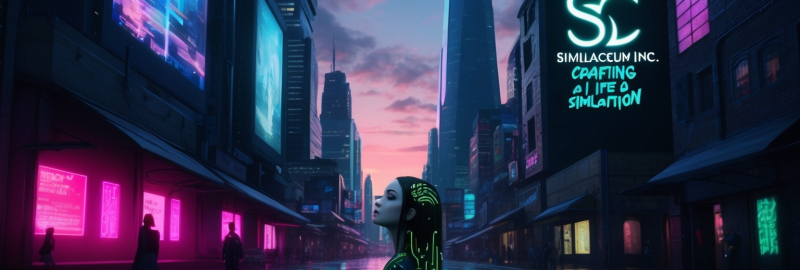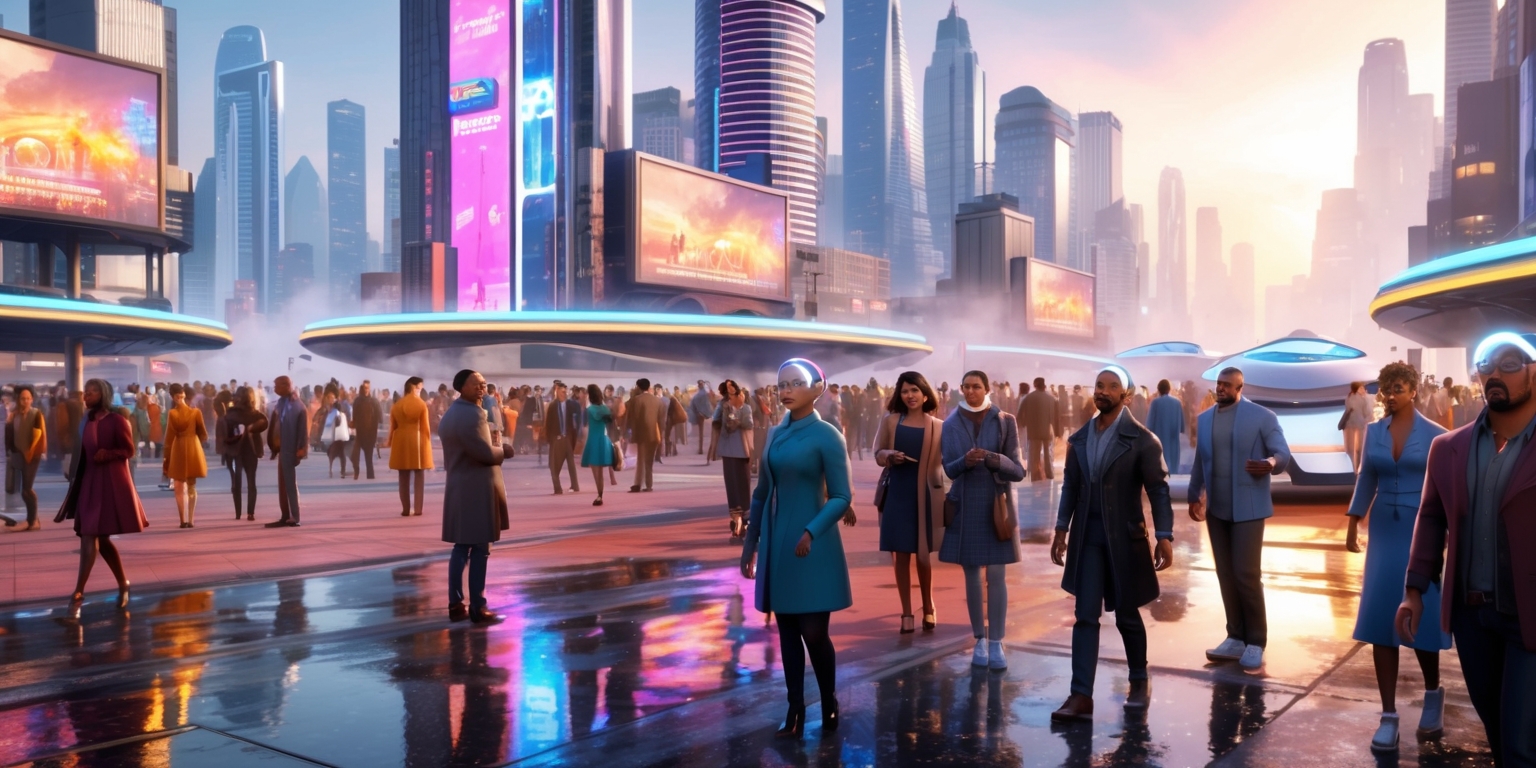
This weekend’s dive into the game's intricate world reveals an experience that dazzles with its creative potential yet struggles to infuse genuine warmth into simulated lives. The environment brims with impressive visuals and detailed design mechanics that promise endless artistic freedom, yet it often falls short in providing engaging, heartfelt gameplay. Beneath an alluring artistic veneer lies a system that methodically processes interactions and urban planning, creating a blend of artistry and administrative oversight. The sense of creative empowerment is palpable in every customization option offered, though users may find the transition from crafting to truly “living” within this world noticeably sterile. The environment invites you to sculpt an existence, only to remind you that life itself still remains elusive in this simulation.
Creative Expression Through Detailed Customization
The game introduces a dynamic character creation tool that acts as both a canvas and a sculpting surface for users to design their avatars. Each clothing item and detail can be personalized systematically using customizable textures, patterns, and a full spectrum of colors. This level of customization sparks the sensation that every choice contributes to building a unique digital persona, much like an artist meticulously working on a portrait. However, while the tool emphasizes visual and aesthetic freedom, it acknowledges certain oversights such as limited representation options for plus-size figures and accessibility features. The developers have demonstrated an awareness of these shortcomings, promising future refinements. Overall, the crafting of characters feels like an intrinsic part of the game, marrying creativity with the simulation’s broader design ethos.
Visually Immersive World and Dystopian Detailing
The graphical representation of the world is a central point of interest, delivering visuals that are as intricate as they are captivating. The game’s environment mirrors a dystopian ambience, reminiscent of a consumer-driven society stripped of its soul. Every street, building, and residential area is rendered with careful detail, evoking a tangible sense of place despite its underlying emptiness. The urban aesthetic plays on contrasts, showcasing beautiful architecture next to the clinical precision of city planning elements. The detailed depictions not only serve as a background for gameplay but also highlight the stark contrast between artistic potential and the deliberate lack of dynamic human interaction. This emphasis on visual allure Reimagines the limits of what one typically anticipates from a simulation, engaging players visually even as other elements leave them wanting deeper life-like experiences.
Architectural Ingenuity in Home Creation
Constructing a home in the game is akin to orchestrating a finely tuned art project, where every structural element—from ceilings to exterior facades—can be manipulated with precision. The interface offers features like free-placement of objects, adjustable walls, snap-roofing, and the ability to craft custom meshes, all integrated within an intuitive control system. This approach draws inspiration from established design software, allowing players to push creative boundaries that extend beyond simple decoration. Each feature, while sometimes feeling slightly awkward in execution, indicates a significant leap toward design perfection. The home-building aspect of the game transforms the act of decorating into a creative narrative, merging functionality with aesthetics. The process is engaging, as every customization decision contributes to both a visually appealing environment and a personal sense of achievement.
Urban Oversight and City Management Dynamics

Beyond the individual home, Original: the player steps into the role of a Rewritten: the player assumes the persona of a meticulous city planner capable of orchestrating the local environment on a grand scale. The game provides tools to manage various urban parameters, including environmental conditions, traffic flow, and community aesthetics—all adjustable according to the player's whims. The intricate control over public spaces is reminiscent of modern simulation titles, yet it carries its own unique flavor by integrating it with avatar-focused gameplay. By adjusting street cleanliness and the blooming of neighborhood flora, players feel empowered to mold the ambiance of their created world. However, even as these tools suggest a vibrant life behind every corner, the broader system sometimes leans more toward structured management than spontaneous simulation, reinforcing a controlled rather than a chaotic portrayal of life.
Everyday Interactions and Digital Relationships
The simulation ventures into the domain of personal interactions, striving to create moments where digital characters engage in routine social activities. Yet, even when it introduces scenarios like family life or casual outings, the interactions lack the warmth and spontaneity of genuine relationships. The dialogue system, though innovative in its approach, often unfolds with a mechanical predictability, where meaningful affection or connection is notably absent. As characters navigate through traditional life tasks—from starting a family to managing daily errands—the system sometimes constrains their behaviors into repetitive cycles, leaving little room for organic development. This mechanical portrayal of digital relationships provides a glimpse into how the game balances its creative ambitions with limitations in simulating true human complexity, ultimately underlining the gap between artistic freedom and engaging dynamic interaction.
Mechanics of Movement and Autonomy
The game endeavors to offer life-like movement for its digital inhabitants, yet it presents a curious interplay between scripted independence and user-directed actions. Characters operate within a framework that suggests autonomy; however, they often resort to repetitive behaviors unless commanded otherwise. This rigidity becomes particularly evident in scenes where different errands are involved—switching between activities with little variation in execution. The interface prompts users to direct actions explicitly, reducing the risk of spontaneous moments that might otherwise mirror real-life unpredictability. Notably, even in routine tasks like traveling via subway or exploring a park, the characters remain somewhat detached, operating in what appears to be a pre-determined mode. This dichotomy between intended autonomy and programmed routine brings forth the unique challenge of balancing control with emergent behavior in a digital simulation of everyday life.
Interactions With the World: A Fractured Sense of Energy
A notable aspect of the simulation is its attempt to breathe energy into daily routines, from the simple act of visiting local parks to embarking on commuting journeys via public transit. The design incorporates environmental cues, such as the presence of easels and communal spaces, to inspire spontaneous creativity. However, the characters’ engagement with these elements often falls short of evoking a genuine sense of life. Activities that could blossom into rich, dynamic narratives instead become sterile routines, as the digital avatars engage mechanically and then halt abruptly. This understated energy, or lack thereof, tends to emphasize the contrast between the game’s artistic potential and the limitations of its programmed behaviors. Consequently, while the game succeeds in immersing players in a beautifully designed urban landscape, the intended spark of life and unpredictability is regrettably subdued.
Balance of Creative Tools and Simulation Constraints
The interface of the game brilliantly interweaves the creative power of design with an array of management and control options. Players are granted near-unlimited freedom to design characters and their surroundings, which sets a high expectation for interactive simulation. However, this creative flexibility is counterbalanced by the rigid nature of underlying simulation mechanics which restrict spontaneous digital life. Although many elements echo the charm of classic life simulations, the deliberate integration of design features sometimes overshadows organic behaviors. Tools that are usually present in other simulation titles, such as modded freedom or unscripted events, are presented in a controlled format here, mitigating the unpredictability one might hope for. This careful balance invites users to marvel at the sophisticated design capabilities, even as the simulation struggles to fully capture the randomness and vitality of true life.
Employment Systems and Career Simulation
The game takes an intriguing approach toward career development, offering a variety of employment options that are tied directly into the simulation’s daily cycle. Characters can pursue careers ranging from academia to technology-driven roles, each delivered with an emphasis on the laborious nature of these jobs. However, what initially appears promising quickly devolves into a series of monotonous sequences where user interaction becomes limited to watching as routines progress. The workday, rendered with detailed fidelity, highlights the contrast between a vibrant creative interface and the mechanical repetition of career tasks. Speeding up the passage of time only exacerbates the stilted rhythms of these routines, with tasks unfolding in a predictable, unvarying manner. These job simulations underscore a further critique of the game’s overall design—where the vibrant promise of an interactive life fades in favor of a series of automated, uninspiring sequences.
Integration of Urban Life With Personal Narrative
A particularly ambitious facet of the simulation lies in attempting to blend urban planning with personal character narratives. Players find themselves not only directing individual avatars, but also weaving a broader story through managing community behaviors and public aesthetics. This dual-layer mode of gameplay allows for scenarios where the city itself serves as both a Serving as both the setting and a dynamic force amid the evolving events events. Adjustments to traffic flow, environmental charm, and even community morale are interlinked with the individual’s journey, suggesting that every decision has a ripple effect. Despite the power this offers, the melding of macro-scale management with micro-scale personal drama often falls short of fostering a convincing dynamism. The city feels simultaneously crafted and constrained—a carefully arranged stage where personal narratives struggle to break free from predetermined scripts, highlighting the tension between controlled design and authentic life experiences.